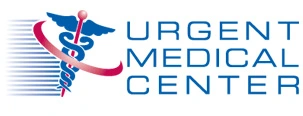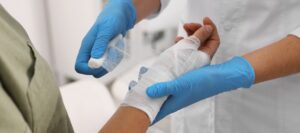
Around the world TB still remains a more prevalent problem, in fact every second someone new is infected with Tuberculosis. Making TB the leading infection causing death around the world. People in the US can still die from Tuberculosis, but thankfully death rates have tremendously decreased since treatment methods and vaccinations for TB have been introduced (Read more on this topic).
TB does not only impact your lungs, it can also go after other parts of the body such as the kidney, spine, and even brain. If you contract TB and don’t seek immediate medical treatment death can be a real possibility.
How Do You Catch Tuberculosis?
You cannot catch TB by simply shaking someone’s hand, sharing drinks, or even kissing. Although before you start thinking TB is hard to contract, it’s actually all too easy to come in contact with the infection. TB is an airborne illness, meaning you have to breathe in the same air as an infected individual to contract TB. If someone carries TB but the bacteria are not present in their cough, they are not contagious.
Different Types of Tuberculosis
Some people get very sick after contracting TB and others do not get sick at all. There are two types of TB-related conditions Latent TB infection and TB disease.
Latent TB infection can live dormant in your system for a long time. If you have latent TB you do not feel sick because your body is able to fight it off the bacteria. You will not make others sick with latent TB. Still, you remain at risk for the TB bacteria to multiply and grow, suddenly transforming into TB disease at any time.
TB Disease is the active form of tuberculosis. If you have TB disease your body is struggling to fight it off. Meaning you do experience TB symptoms and remain contagious to others.
There are 2 different ways that TB can infect your body:
– Miliary TB: The TB bacteria has spread through your lungs and reached your bloodstream.
-TB meningitis: The infection has covered the spinal cord and/or reached the brain.
Symptoms of Tuberculosis
After coming into contact with tuberculosis everyone seems to get sick at different times. Some people never get sick, while others experience symptoms weeks, months or even years later. The average time to show symptoms after coming into contact with TB is 1-6 months.
TB can be detected using a skin test and a blood test. A positive reaction to either test will signal that you have latent TB or TB disease. Even if you have no symptoms but think you have come into contact with TB you should contact your local Urgent Care Center for a TB test.
The Most Common Symptoms for Miliary TB Include:
- Bad cough that extends 3+ weeks
- Pain in your chest
- Coughing up blood or excessive phlegm
- Feeling continually weak or abnormally fatigue
- Unexplained appetite loss and subsequent weight loss
- Chills
- Fever
- Night sweats
If you have TB meningitis the symptoms are similar but more serious symptoms will start to arise including:
- Vomiting
- Headaches that are severe and persistent
- Feeling worse under certain (or all) lighting
- Stiff neck
- Seizure
TB meningitis is the most sever form of TB, if you think you have TB meningitis it’s important to visit your local Emergency Room right away. You want to seek treatment before brain damage has a chance to develop.
You are at a much greater risk for contracting TB if you:
- Are HIV positive
- Are Experiencing Kidney failure
- Have been infected with TB within the previous 2 years
- Improper treatment of previous TB disease
- Are Diabetic
- Abuse drugs or alcohol
- Have a weakened immune system for any reason at all
The Tuberculosis Vaccine
While TB has been on the decline in industrialized nations for many years, we have seen a slight increase in TB cases in most recent years. The World Health Organization recommends the TB vaccine, which is administered in over 100 countries.
In the US the infection is largely under control. The TB vaccine is only recommended if you are regularly exposed to someone with TB and healthy enough for the vaccine. Children and health care workers are the most common candidates for the TB vaccine. If you have any underlying conditions, are pregnant, have burns or skin infections, you may not be eligible for the TB vaccine.
The TB vaccine is administered with one shot. One study found it protected 50% of patients from contracting TB in the future. The earlier in childhood you get the vaccine, the better the results are in terms of keeping tuberculosis away. Even after getting the vaccine, you are still at risk for contracting TB, but it protects 80% of people from developing a life threatening form of TB.
Common side effects associated with the TB vaccine include redness, swelling, and tenderness at the site of injection.
Tuberculosis Treatment
If you are infected with tuberculosis there are medications available to help. Some forms of TB are drug-resistant, requiring multiple types of medications and treatment methods to conquer the infection. To keep risks associated with TB from worsening, you should consult with a medical provider as soon as possible.
Need a TB test or TB vaccination? Visit us at Urgent Medical Center today!





